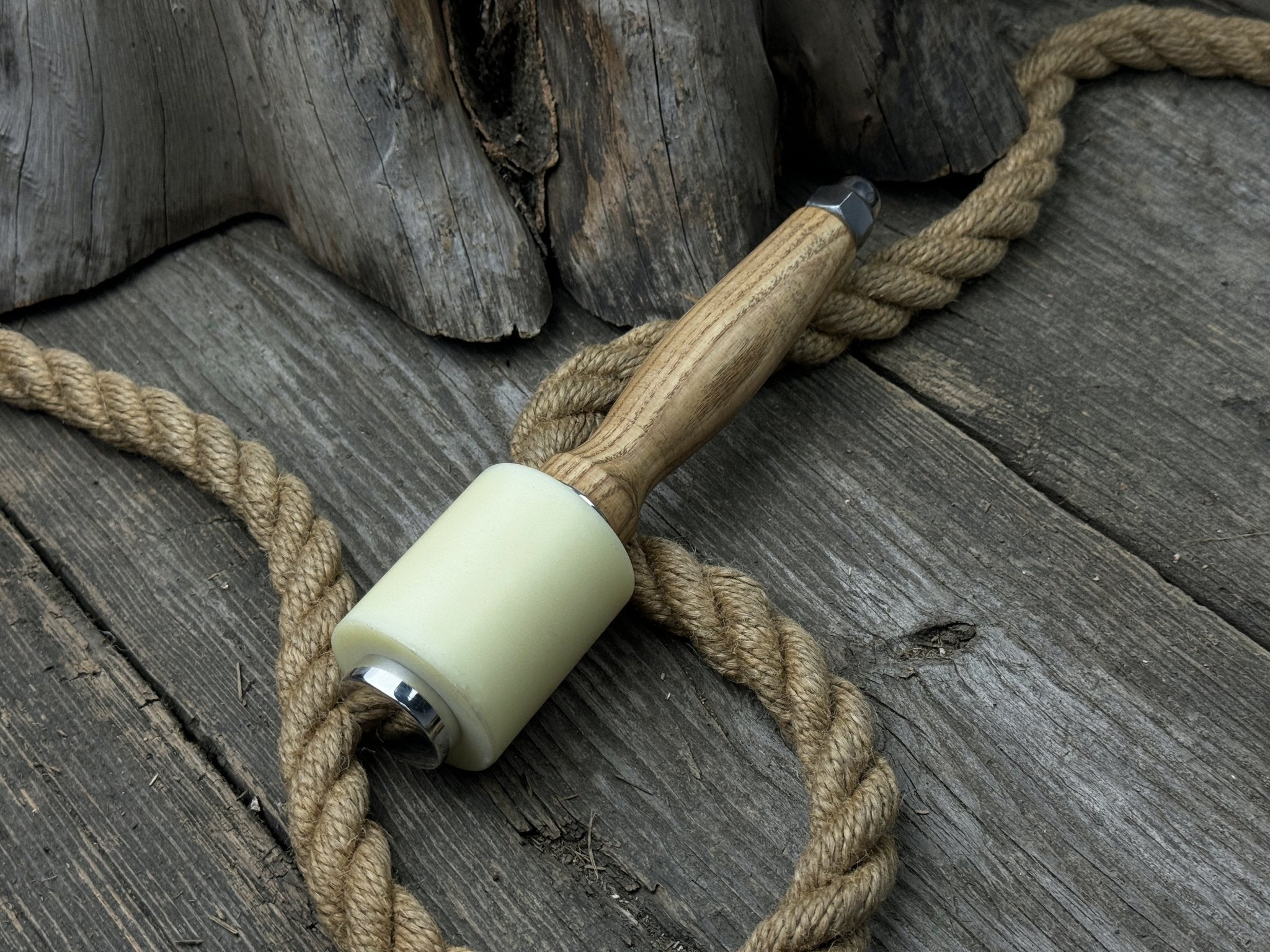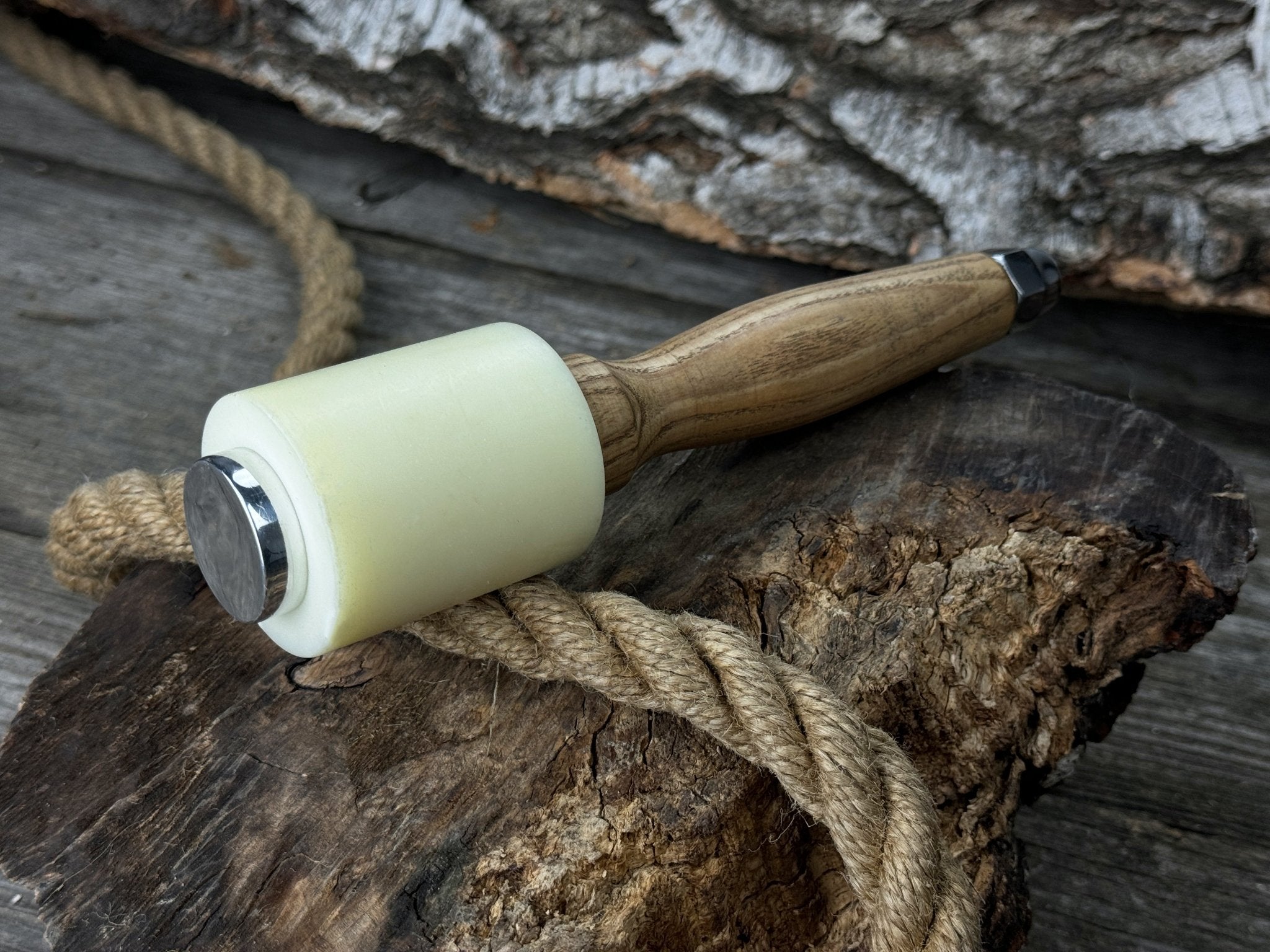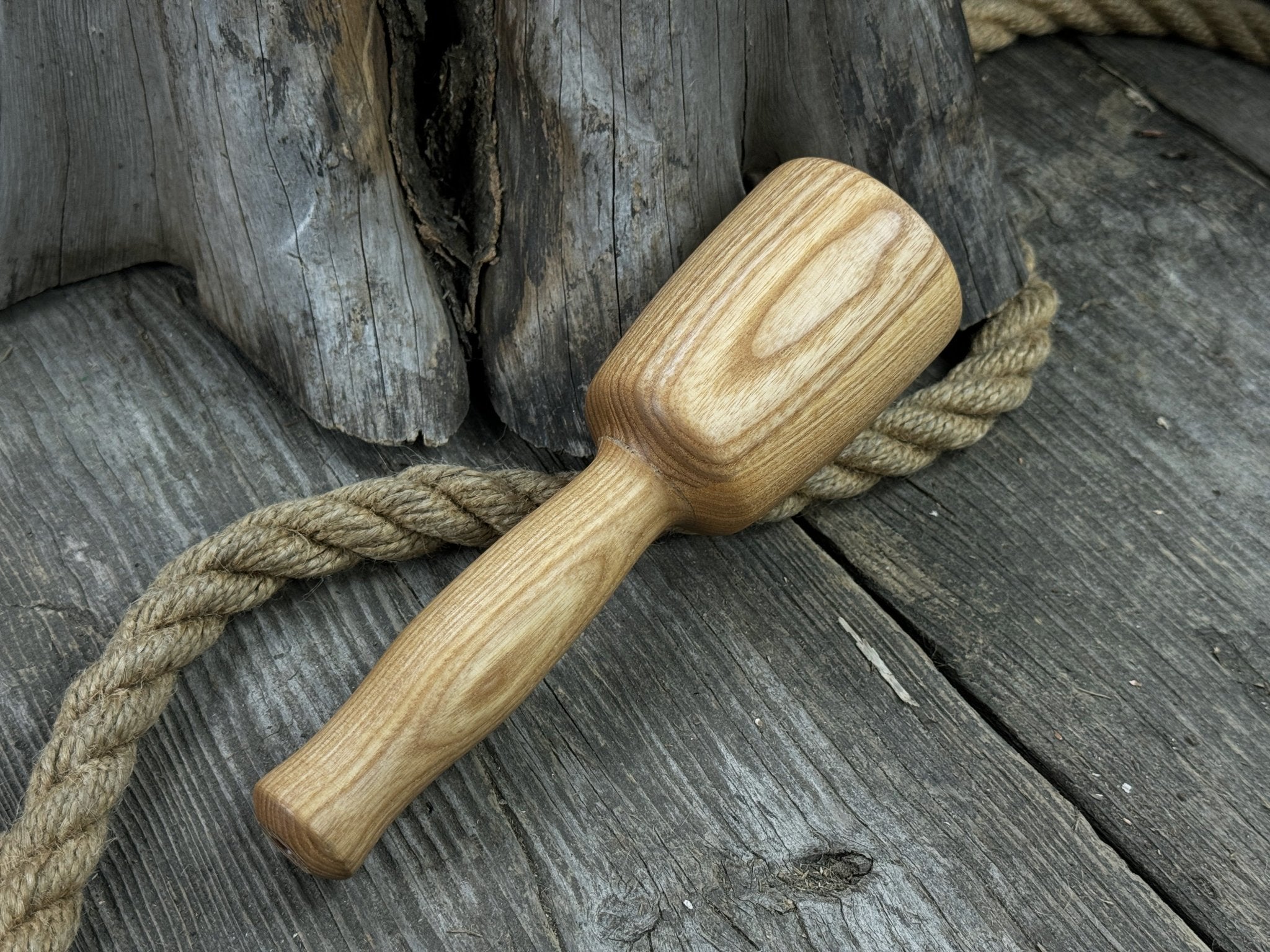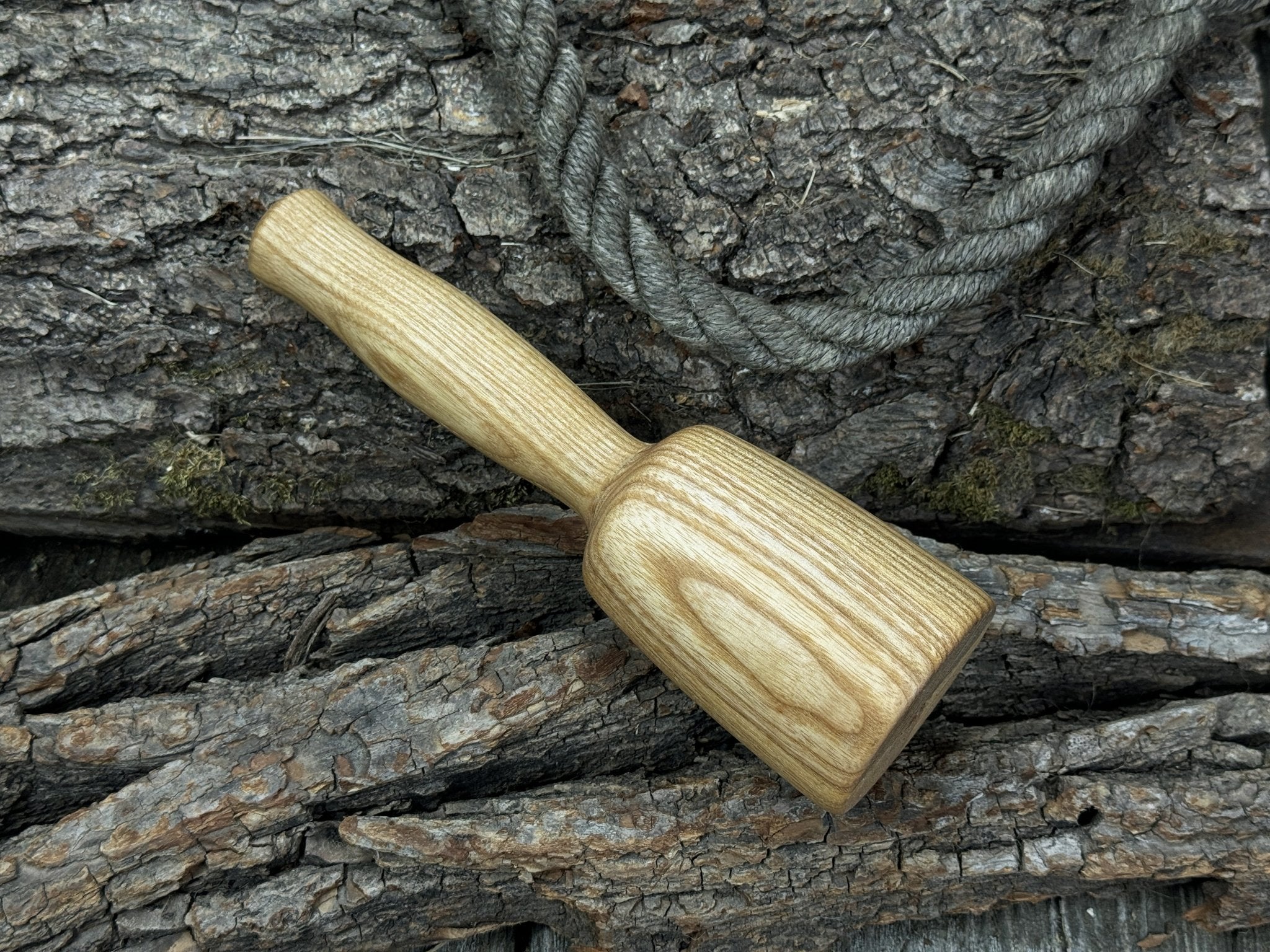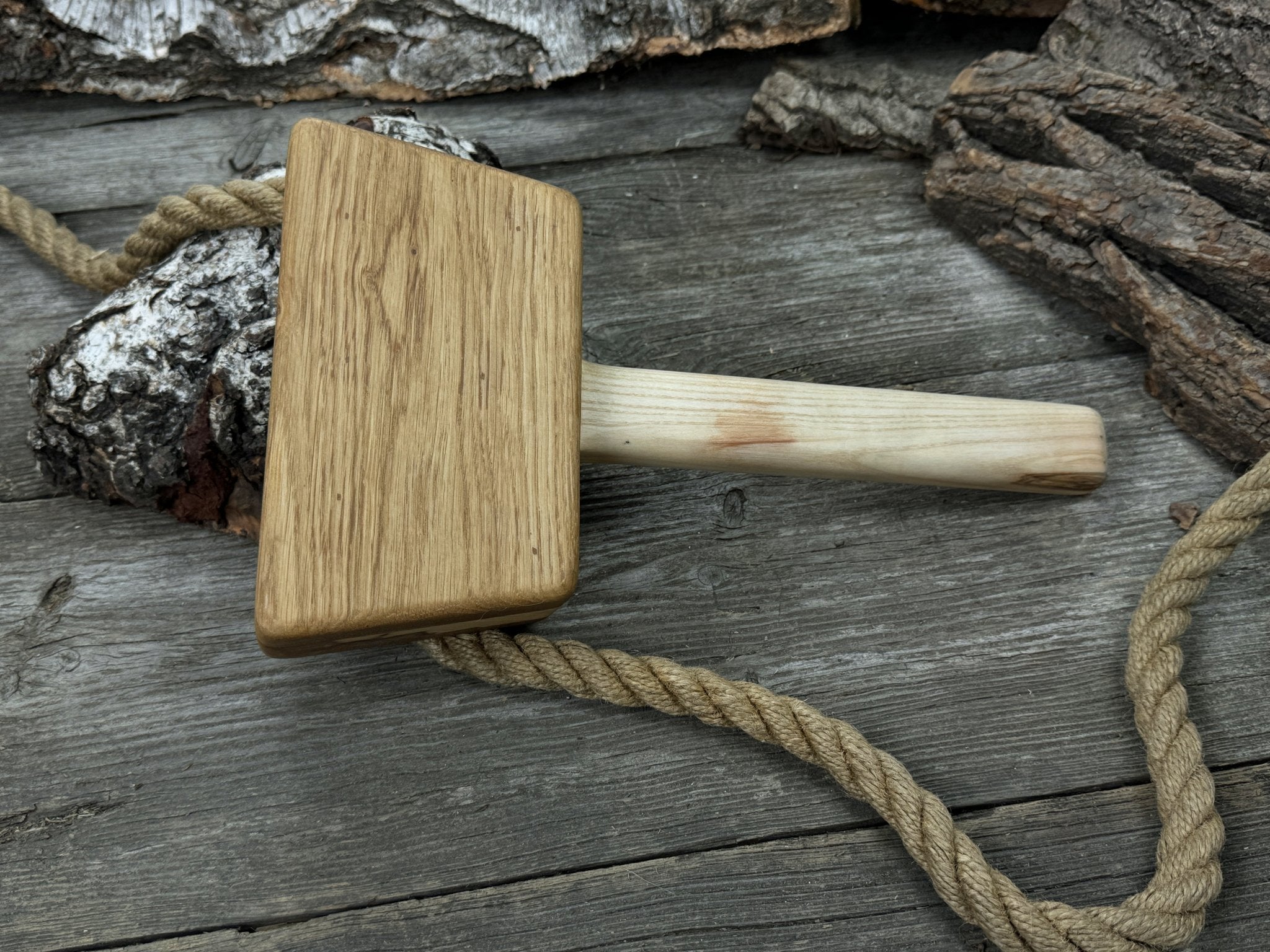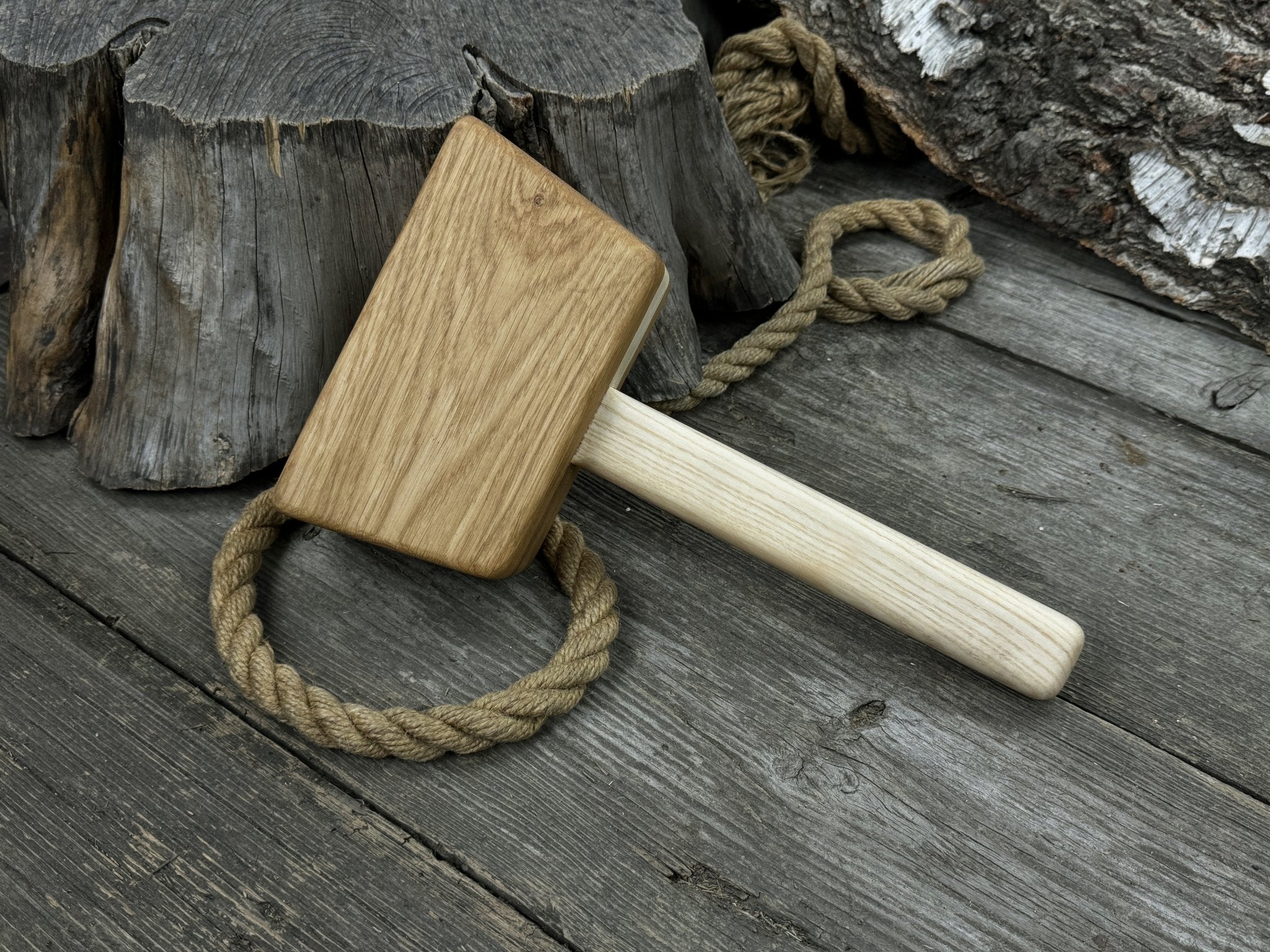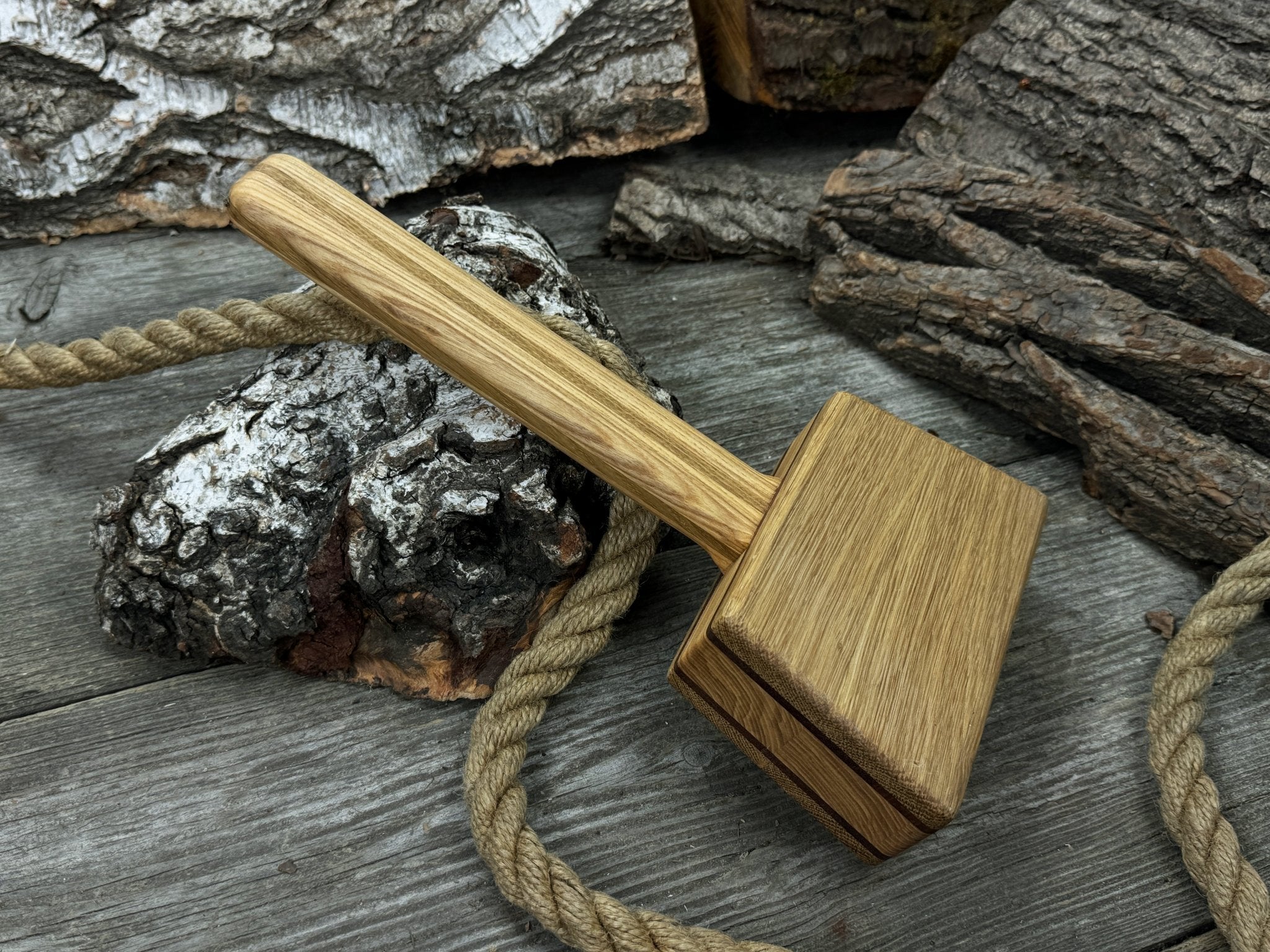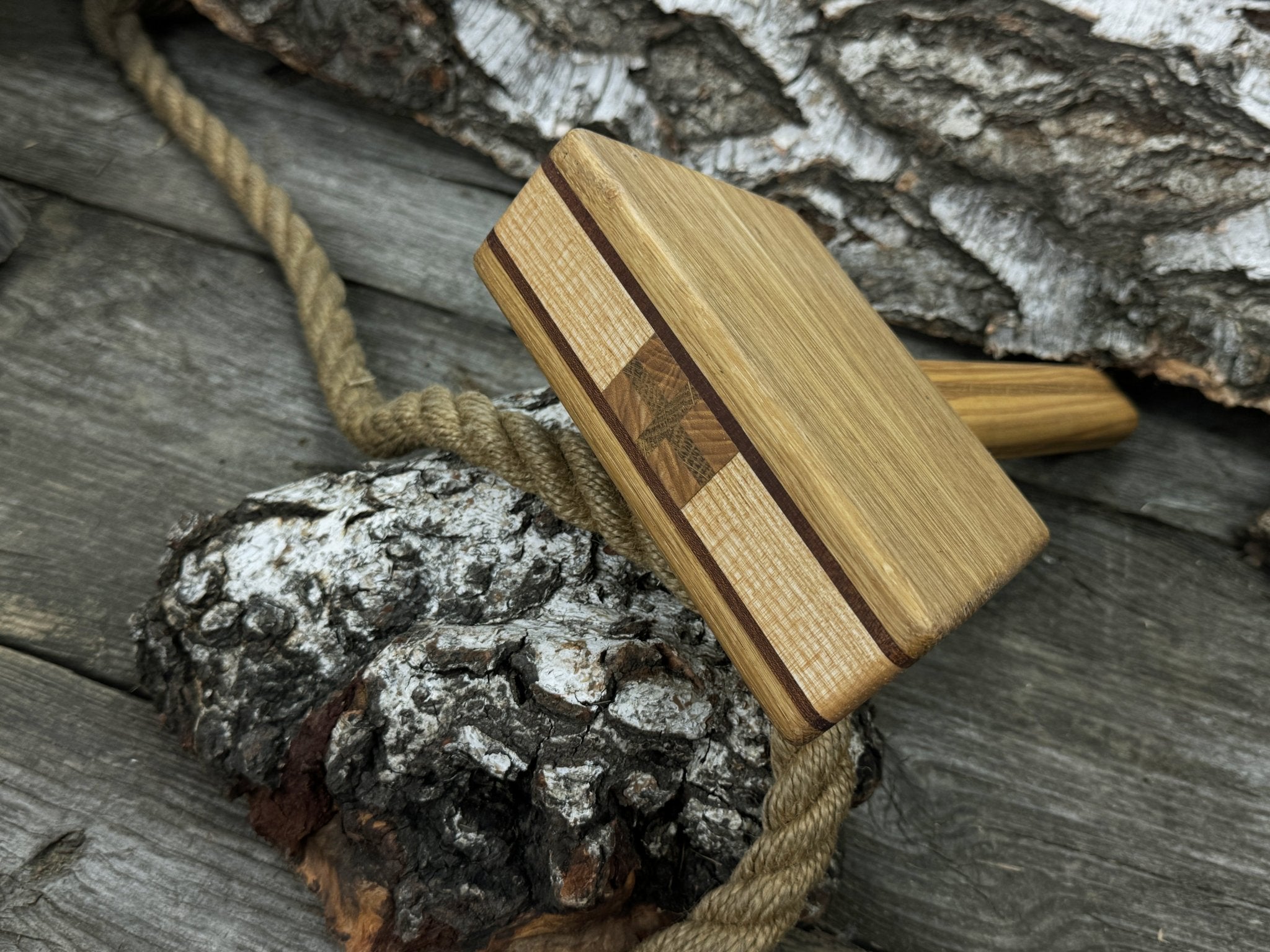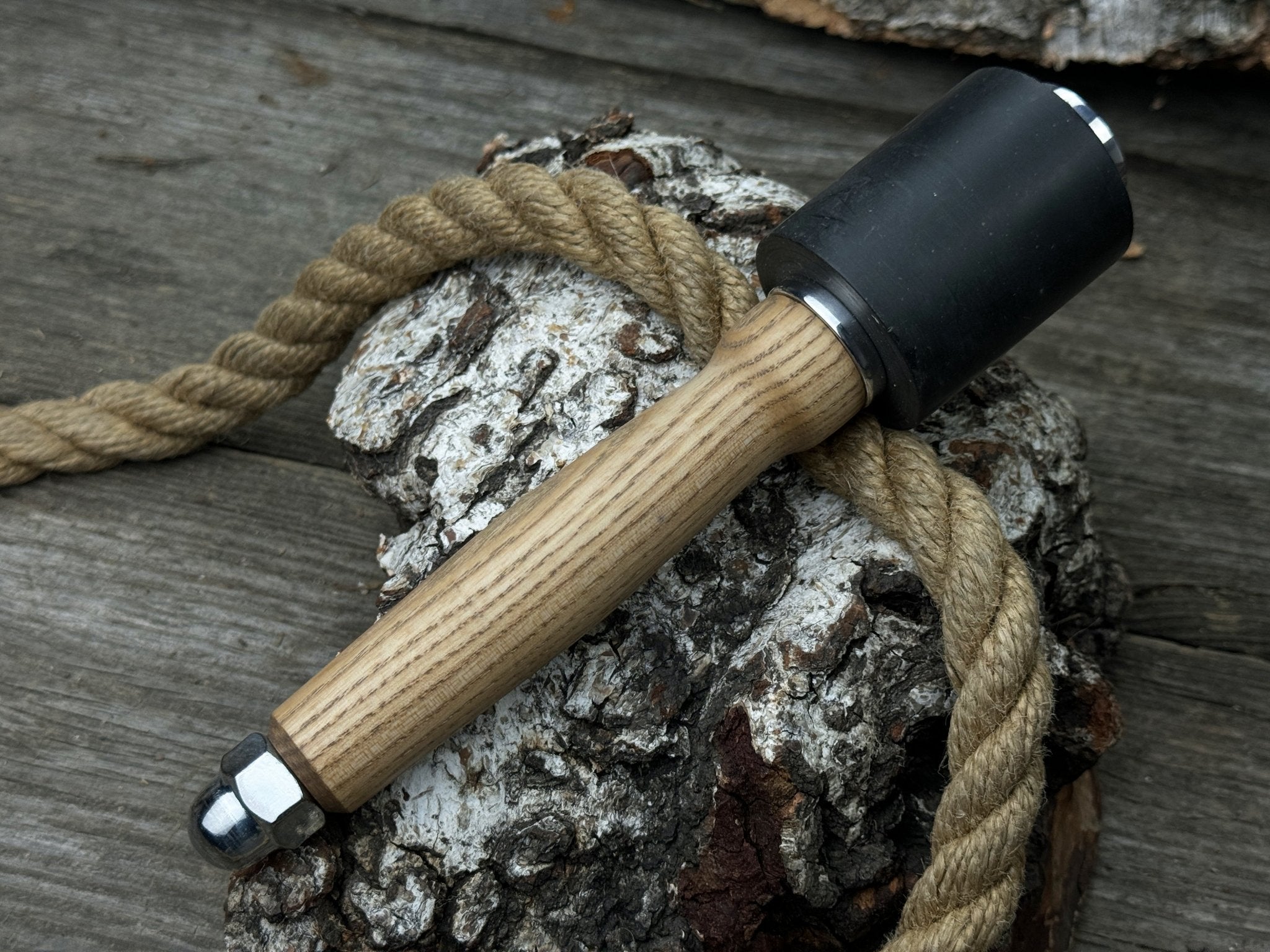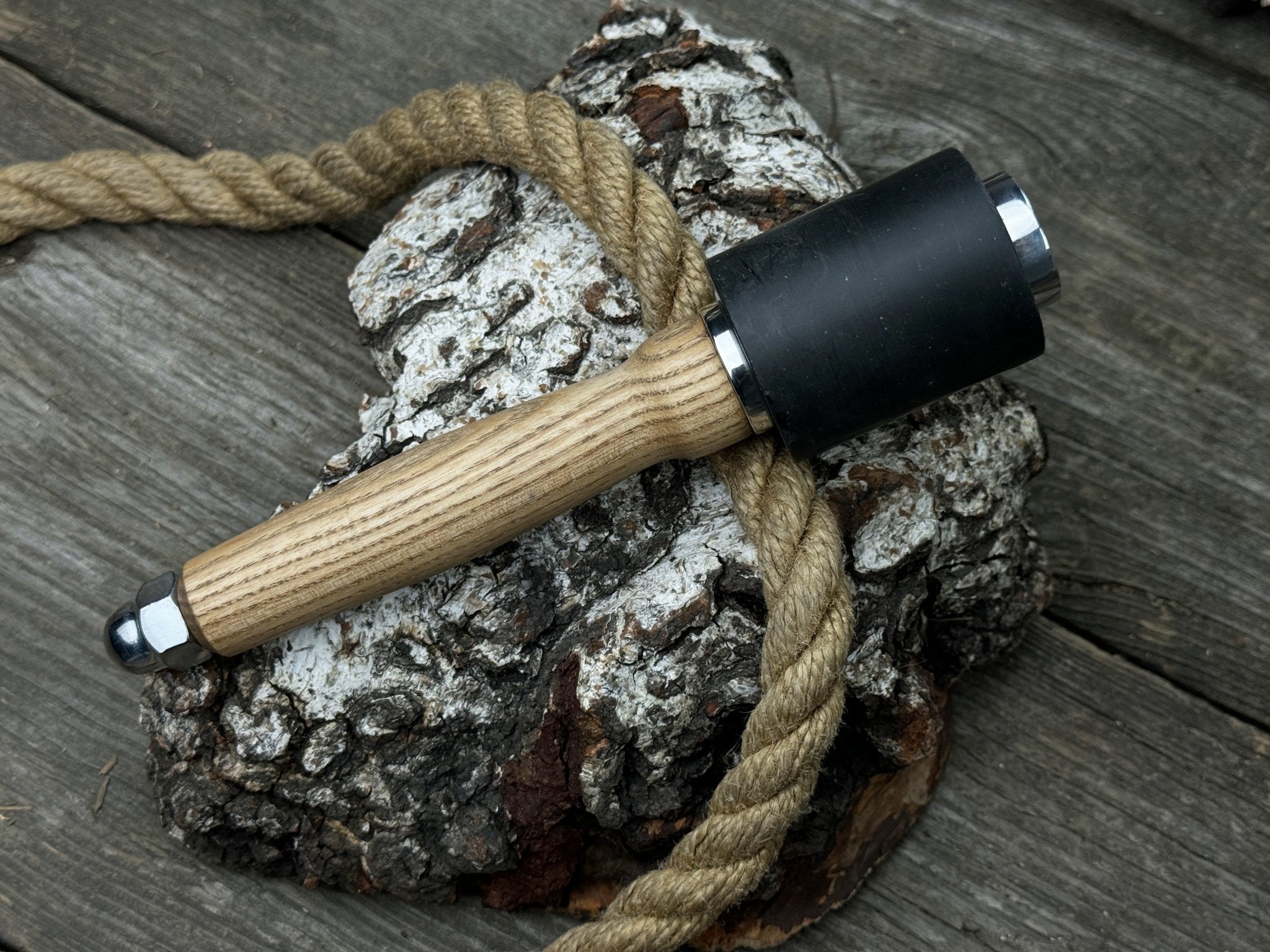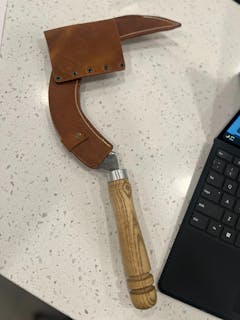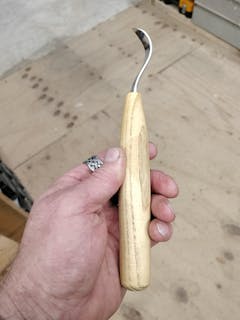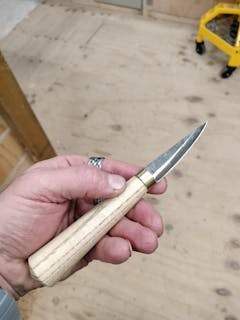Handmade Mallet with Nylon Head, 21.5 cm (8.46 inches)
Quiet 7 oz. Wooden Mallet (Mallet Tool)
Quiet 35 oz Wooden Mallet (Mallet Tool)
Quiet 23 oz Wooden Mallet (Mallet Tool)
Mallet with Nylon Head, 350 g (12.35 oz)
What Are Wooden Mallets and Why Are They Essential?
Definition and Key Features
Often used in carpentry and woodworking, wooden mallets are handheld tools used to drive other tools like chisels, strike surfaces without causing damage, or tap wooden pieces together. Broadly speaking, a wood mallet is ideal for tasks that require a bit of force and precision.
Wood mallets consist of a handle made of wood, shaped close to the head for better control, and a barrel-shaped head. The heads of a woodworking mallet can be crafted from a variety of hardwoods (e.g., maple, white oak, beech) and dense woods (e.g., osage orange, birch).
The typical construction of a wooden mallet is as follows:
- Head: A common wood mallet weight is about 2-4 pounds. The head is larger and softer than a hammer’s, designed for more controlled and soft strikes.
- Handle: Usually ranging from 10 to 16 inches, depending on the intended use of the mallet, with thickness of around 1-1.5 inches to ensure a sturdy grip. Most handles are straight, though some may taper slightly toward the head for a more secure hold.
Applications in Woodworking
Wooden mallets offer precise control and gentle impact, which makes them irreplaceable assistants in different types of woodworking tasks:
- Chiseling and Carving: A wood mallet provides the necessary force for shaping wood with a chisel, allowing for controlled, accurate cuts.
- Joinery: A wooden mallet hammer helps assemble woodworking joints, like mortise and tenon connections, ensuring a tight, secure fit without splitting the wood.
- Assembling Furniture Pieces: A wooden mallet taps joints and components into place during furniture assembly without damaging surfaces.
- Adjusting and Aligning: These tools align and adjust pieces of wood, providing controlled force, such as tapping cabinet door rails and stiles into alignment.
- Driving Dowels and Pegs: Driving dowels and pegs into pre-drilled holes to ensure they seat properly without marring surrounding wood.
- Setting and Adjusting Tools: Wooden mallets are useful for setting and adjusting tools like plane irons and saw blades, helping woodworkers tap parts into place with a mallet.
How Wooden Mallets Differ from Metal and Rubber Mallets
Each type of mallet has its unique strengths and is chosen based on specific requirements of the task at hand.
While wooden mallets are more suited for precision woodworking, offering control and shock absorption, metal mallets are designed for heavy-duty type of work that requires more durability and force. Rubber mallets, on the contrary, provide a gentle touch, minimizing the damage to surrounding surfaces.
Let’s take a closer look at how these three differ:
- Woodworking Mallet: Made from hardwoods, this woodworking mallet provides controlled force needed for tasks like chiseling and assembling joints. The wood absorbs impact, reducing strain on the user and protecting the workpiece. However, the tool may wear down over time with heavy use.
- Metal Mallet: Constructed entirely from metal or with a metal head and a wooden or composite handle, this type is extremely durable and used for high-impact tasks like driving stakes and metalworking. While powerful, it can easily damage delicate surfaces and tools.
- Rubber Mallet: With a rubber head and a handle made from wood, metal, or fiberglass, this mallet is gentle on surfaces and used for tasks like adjusting joints, assembling furniture, and installing tiles. It may have a bounce-back effect and less striking force than a woodworkers mallet but has applications beyond woodworking.
Types of Wooden Mallets: How to Choose the Right One
Wood mallet types vary in design, adapting to diverse woodworking needs. Different hardwoods, such as oak, maple, and beech, allow customization in weight and balance for specific tasks. Common types include:
- Mallets for Carving and Chiseling
Construction: A wood carving mallet often features a cylindrical head and hardwood or dense wood handle.
Uses: This woodworking mallet is used for light taps in carving and precise chisel strikes.
- Heavy-Duty Mallets for Heavy Striking
Construction: A heavy wooden mallet features a large, heavy head of a rectangular shape; handle built to withstand heavy use.
Uses: Heavy head delivers powerful blows for driving large chisels, assembling heavy joints, and occasional demolition work.
- Lightweight Mallets for Precision Work
Construction: These mallets have smaller, lighter heads often made from softwoods like pine or birch.
Uses: Fine joinery, adjusting small components, and tapping delicate surfaces into place.
Key Factors to Consider When Choosing a Wooden Mallet
If you are new to woodworking, you may want to start with a sturdy, traditional joiner’s wooden mallet hammer, and as you become familiar with different woodworking tasks, consider adding specialized mallets to suit each type of work. Experimenting with mallet weights and materials helps in finding the best fit for control and impact.
Here is what to look for in the tool:
- Weight and Balance: Heavier mallets provide more power, while lighter mallets allow for controlled motions. For smoother strikes, the weight of the mallet should be evenly distributed between head and handle.
- Handle Design and Comfort: A comfortable, non-slip handle fit for your hand is essential. If you need a wooden mallet for powerful blows, choose the tool with a longer handle for better leverage. Shorter handles are more suited for projects that need control and precision.
- Wood Type: Hardwoods like hickory and maple are dense and durable for heavy work but may split over time. Softer woods like ash and beech absorb shock better and give a gentler impact. When using a wooden mallet to drive a chisel, a mallet softer than the chisel handle is recommended.
Common Mistakes to Avoid When Using Wooden Mallets
Selecting the wrong wooden mallet for the task is a frequent mistake. For example, a hardwood mallet is more effective for woodworking than a rubber mallet. Another error is using a mallet for heavy-duty tasks better suited for hammers, like driving large nails. And here are a few more pitfalls to avoid:
- Overstriking and Its Consequences: Striking too hard can split the wood mallet’s head and damage the workpiece, especially with softer wood. Overstriking can also cause wrist injuries. Hold the handle near the base for powerful blows and near the head for control. Use long swings for power and short, wrist-driven swings for delicacy.
Improper Storage and Care: Proper care extends a wooden mallet’s life. Clean it regularly with a damp cloth, avoid harsh chemicals, and store it in a cool, dry place to prevent temperature-related damage.
